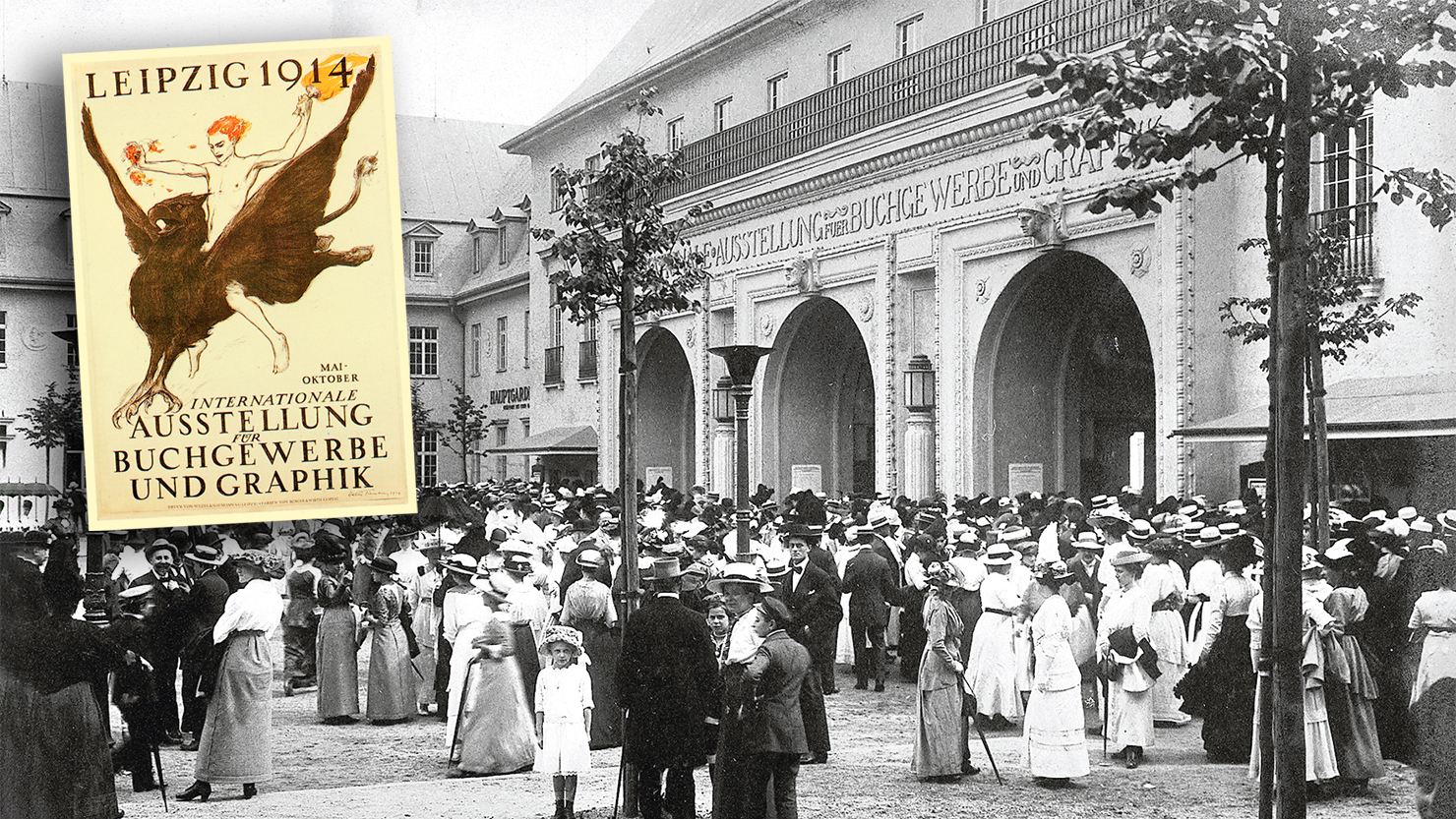BUGRA (Weltaustellung für BUchgewerbe und GRAfik) opened on May 6, 1914 in Leipzig, Germany. It was the first of its kind - a world's fair showcasing all aspects of books and bookmaking, including papermaking, printing, bookbinding, and book publishing. The fair was built on a 100-acre parcel near the site of the Battle of The Nations 100 years earlier. As many as 40 primary structures were erected, 22 countries exhibited, and 2.3 million visitors attended. The United States of America did not participate, except for the exhibits by the Library of Congress, Harvard and Columbian University libraries.
The iconic Bugra 1914 poster was designed by Walter Tiemann, from the Leipzig Royal Academy. The poster artistically depicts a young man riding a gryphon, carrying a torch in one hand and flowers in the other. The inspiration and meaning of the image were widely discussed, and often parodied by humorists.
The main presentation in the massive Hall of Culture was an exhibit named “Three Thousand Years of Graphic Arts in the Service of Science.” It was an in-depth exploration of the role graphic arts played in the progress of civilization throughout the ages – from pre-historic times and man’s earliest printing attempts including Gutenberg’s invention, all the way to the modern era.
Many equipment manufacturers paraded their new or new-and-improved machinery and techniques. The Howard Iron Works Museum is proud to have many of these manufacturers represented in the Collection:
On July 27, the First World War was declared. Although Bugra remained open, immediately Great Britain, France, Belgium, Russia, and Japan closed up their exhibits and went home. Some other exhibitors followed and abandoned the Fair. Bugra received about 2 million visitors at the time the war started, but the terrible news sadly drove the attendance down drastically to a meager 300,000 for the rest of the fair.
Bugra 1914 was finally closed on October 18, leaving the city of Leipzig with a half a million Reichsmarks in debt. The buildings and structures were quickly demolished to make room for drill fields for military exercises. A significant amount of the exhibits were safely placed in a museum. But, the sad legacy of war continued when three-quarters of the saved books and artifacts from Bugra 1914 were destroyed when the museum was severely hit during the World War II bombing of Leipzig in 1943. In 1945, the Red Army seized many valuable artifacts, including a Gutenberg Bible, and took them to Moscow. To this date, they remain at the Russian State Library.
Subsequent Bugra exhibitions were held since 1914, but they were nowhere near the size of the Leipzig’s Bugra in size and level of excitement the 1914 edition generated.
In the century following Bugra 1914, some of the manufacturers succumbed to the tide of technology obsolescence, or merged with, or were acquired by others. But, some such as Heidelberg, König & Bauer, and Müller-Martini have continued to lead and thrive today.
Stay up-to-date with the latest museum news and activities.
SUBSCRIBE
